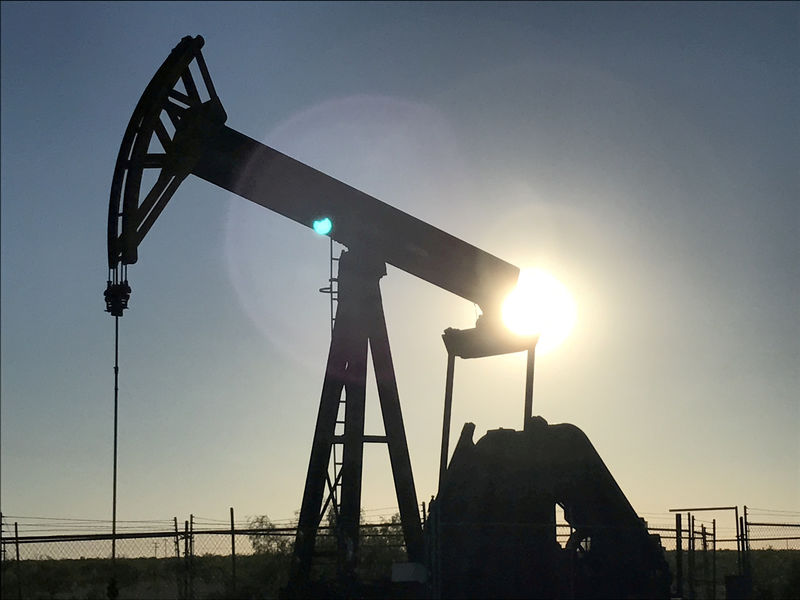By Amanda Cooper
LONDON (Reuters) - Oil shot to nearly $80 a barrel this week after U.S. President Donald Trump walked away from the Iran nuclear deal and the futures market structure shows investors are preparing for a tight supply-demand balance to get even tighter.
Brent crude futures (LCOc1) are hovering around $77 a barrel, having risen by around 10 percent in the last six weeks as U.S. rhetoric around Iran grew increasingly hawkish.
But it is the widening of the premium of the nearer-dated contracts over those for delivery further in the future that highlights investors' concern over the already-delicate balance between crude production and consumption.
The so-called "Dec/Dec" spread, the difference between the nearest December Brent contract and that for December the following year, is at its widest for five years, when Iran was subject to harsh sanctions that cut its oil exports by 40 percent in just 24 months to around 1.3 million bpd by late 2013, around half of what it currently exports.
Ignoring pleas by allies, Trump on Tuesday pulled out of an international accord on Iran's nuclear activities that had been agreed in late 2015, raising the risk of conflict in the Middle East and casting uncertainty over global oil supplies at a time when supply of crude is already falling short of demand.
The Brent December 2019 futures contract
Graphic: Brent crude futures show investor concern over Iran - https://reut.rs/2rvuVc1
At that time, conflict had engulfed fellow OPEC member Libya, driving its oil production down to little more than 200,000 barrels per day from around 1.4 million bpd in the space of 12 months.
Syria, as now, was in the throes of civil war and Islamic State militants were taking ground in Iraq, while North Korea alarmed the world with threats of missile attacks against the United States and South Korea.
The Organisation of the Petroleum Exporting Countries remains committed to a two-year pledge to cut output by 1.8 million bpd jointly with key rivals including Russia.
The group's output is around 2 million bpd higher than it was back in 2013, but global demand has grown by nearly 7.5 million bpd since then.
The oil market can ill-afford yet more shortfalls in production, especially given the drop in global inventories of crude and refined products to a three-year low, involuntary outages in major producers such as Venezuela and a shortage of new upstream projects.
Graphic: Iran's crude oil trade - https://reut.rs/2Im15k1
